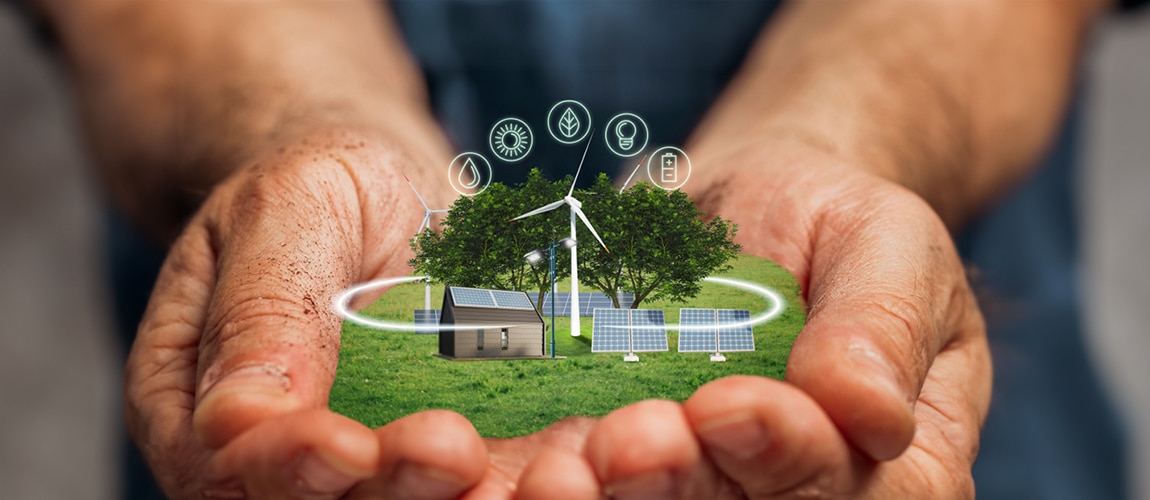Making the switch to sustainable living doesn’t require a complete lifestyle overhaul. The most impactful changes often begin with how we power our homes and daily activities. Smart energy choices not only reduce your environmental footprint but can also lead to significant savings on your monthly bills.
Energy consumption accounts for roughly 70% of the average household’s carbon emissions. By focusing on this area first, you can make meaningful progress toward a more sustainable lifestyle while building momentum for other eco-friendly changes. The key lies in understanding which energy decisions deliver the biggest impact and how to implement them effectively.
Understanding Your Energy Consumption
Before making changes, it’s essential to understand where your energy goes. Most homes use electricity for lighting, heating, cooling, and powering appliances. Water heating typically accounts for 15-20% of energy use, while heating and cooling can consume 40-50% of your total energy budget.
Start by conducting a home energy audit. Walk through each room and identify energy-hungry devices. Look for older appliances, inefficient lighting, and areas where heated or cooled air might be escaping. Many utility companies offer free or low-cost professional audits that can reveal hidden energy waste.
Choosing Renewable Energy Sources
Solar power has become increasingly accessible and affordable for homeowners. The cost of solar panels has dropped by more than 80% since 2010, making residential solar installations a viable option in many areas. Even if you can’t install panels on your property, community solar programs allow you to purchase renewable energy from shared solar gardens.
Wind energy is another renewable option, though it’s typically more practical for rural properties with adequate space and wind resources. For urban dwellers, small-scale wind turbines are available but may have limited effectiveness depending on local wind patterns and building restrictions.
Many utility companies now offer green energy programs that allow customers to purchase renewable energy credits or opt into clean energy plans. While these programs may come with slightly higher costs, they support the development of renewable energy infrastructure and reduce reliance on fossil fuels.
Energy-Efficient Appliances and Systems
Upgrading to ENERGY STAR certified appliances can reduce energy consumption by 10-30% compared to older models. When shopping for new appliances, pay attention to the yellow EnergyGuide labels that estimate annual operating costs. A more expensive, efficient appliance often pays for itself through energy savings over its lifetime.
Smart thermostats offer another significant opportunity for energy savings. These devices learn your schedule and preferences, automatically adjusting temperatures to minimize energy use when you’re away. Many models can be controlled remotely, allowing you to make adjustments from anywhere.
LED lighting uses 75% less energy than traditional incandescent bulbs and lasts 25 times longer. While the upfront cost is higher, LEDs provide substantial long-term savings through reduced energy consumption and replacement costs.
Home Insulation and Weatherization
Proper insulation is one of the most cost-effective ways to improve energy efficiency. Heat naturally flows from warmer to cooler areas, so inadequate insulation forces your heating and cooling systems to work harder. Focus on key areas like attics, basements, and crawl spaces where heat loss is typically greatest.
Weatherstripping around doors and windows prevents conditioned air from escaping and outdoor air from entering. This simple upgrade can be completed in a weekend and provides immediate benefits. Caulking gaps around plumbing, electrical outlets, and other penetrations further improves your home’s energy envelope.
Smart Energy Management
Time-of-use electricity rates vary throughout the day, with peak hours typically costing more than off-peak periods. By shifting energy-intensive activities like running the dishwasher or charging electric vehicles to off-peak hours, you can reduce costs while supporting grid stability.
Home energy monitoring systems provide real-time feedback on electricity consumption, helping you identify energy waste and track the effectiveness of efficiency improvements. Many smart home devices can be programmed to automatically optimize energy use based on your preferences and utility rate structures.
Understanding local utility rates can help guide your energy decisions. For example, Utah power rates vary by time of day and season, making it beneficial to concentrate energy use during lower-rate periods when possible.
The Financial Benefits of Smart Energy Choices
Energy efficiency improvements often qualify for federal, state, or local incentives. The federal Residential Clean Energy Credit provides tax credits for solar installations, while many utilities offer rebates for efficient appliances and home improvements.
Beyond immediate savings, energy-efficient homes typically have higher resale values. Buyers increasingly prioritize homes with lower operating costs and environmental impact, making smart energy investments beneficial for long-term property value.
Building Sustainable Habits
Smart energy choices extend beyond equipment and installations to daily habits. Simple actions like adjusting thermostats by a few degrees, unplugging electronics when not in use, and using cold water for washing clothes can accumulate significant savings over time.
Engaging the entire household in energy conservation creates lasting change. Set energy-saving goals, track progress, and celebrate achievements to maintain motivation and build sustainable practices.
Taking Your First Steps Toward Energy Independence
Sustainable living through smart energy choices is an achievable goal that benefits both your wallet and the environment. Start with the most impactful changes for your situation, whether that’s upgrading insulation, installing a smart thermostat, or exploring renewable energy options.
The path to energy sustainability is unique for every household, but the destination remains the same: reduced environmental impact, lower energy costs, and greater energy independence. Begin with one or two changes that make sense for your budget and circumstances, then build on your success with additional improvements over time.





